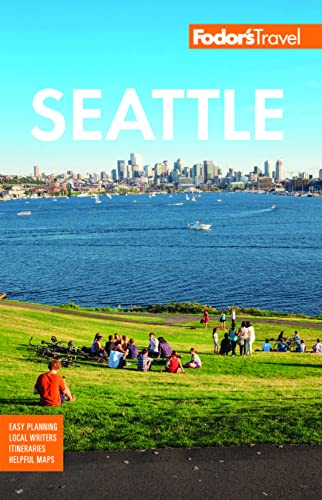Seattle Then and Now
The Early Days
"There is plenty of room for one thousand settlers. Come at once." Upon receiving his brother's note, Arthur Denny set out from Portland on the schooner Exact with two dozen settlers. It landed at Alki Point on November 13, 1851.
The Denny party wasn't the first to arrive at the wild land that would become the Emerald City, though: the Duwamish tribe had been living there for millennia and British explorers surveyed the same spot in 1792. But Arthur Denny was the first of Seattle's many mad visionaries. He dreamed of creating a future endpoint for the transcontinental railroad, one to rival the already steadily developing Portland. The party moved to Elliot Bay's eastern shore in 1852; in 1853, the first boundaries of the city were marked on present-day Pioneer Square and Belltown, and Seattle—named after Chief Seattle (Si'ahl) of the Duwamish and Suquamish tribes—was born.
The Gold Rush
Amid all the growth came a series of disasters. In 1889, the Great Fire burned 64 acres. Then the "Panic of 1893" stock-market crash crippled the local economy. Seattle seemed down on its luck until, in 1897, a boat docked carrying gold from the Klondike, heralding the last Gold Rush.
The city quickly repositioned itself as the "Gateway to Alaska" (Alaska being the preferred point of entry into the Klondike). The assay office that journalist Erastus Brainerd convinced the federal government to open was just part of the city's Gold Rush revenue—Canada's Northwest Mounted Police required that each prospector show up with a year's worth of supplies, and Seattle merchants profited heavily from the edict.
Floatplanes and Postwar Prosperity
William E. Boeing launched his first floatplane from Lake Union in 1916. This marked the start of an industry that would define the city and long outlast timber. World War I bolstered aircraft manufacturing enough that Boeing moved south to a former shipyard.
Seattle was devastated by the Great Depression, with its only growth the result of New Deal programs that built parks, housing, and roads, including the floating bridge that links Seattle and Mercer Island. But entry into World War II again buoyed shipbuilding and aircraft industries. Boeing produced the B-29 bomber, the aircraft used to drop atomic bombs on Hiroshima and Nagasaki.
Seattle's renewed prosperity, which prompted it to host the 1962 World's Fair, remained tethered to Boeing, and the early '70s "Boeing Bust," when loss of federal funding caused Boeing to lay off tens of thousands of employees, sunk the city back into recession. After that, although Boeing would remain an influential employer, new industries would start to take its place. In 1963, Seattle had spent $100 million to upgrade its port in a successful bid to lure cargo traffic from Asia away from Portland and San Francisco. In 1970, six Japanese shipping lines started calling at Seattle.
The Tech Boom and Today's Seattle
The tech boom may have defined the '90s, but it planted its roots in Seattle in the '70s. In 1978, Microsoft moved from Albuquerque to the Eastside suburb of Bellevue, bringing the first influx of tech money—even today "Microsoft money" is shorthand for wealthy techies (Microsoft moved to its current Redmond campus in 1986). In 1994, Amazon.com became incorporated in the State of Washington; it is now one of Seattle's largest employers and has such a significant presence in South Lake Union that many locals refer to it as Amazonia. Although the dot-com bust temporarily took the wind out of Seattle's entrepreneurial sails, the city has continued to define itself as a major tech player, with companies such as Facebook, Google, and Zynga having local offices. And an increasing number of other companies are basing themselves here, including BuddyTV.com, Expedia.com, Zillow.com, AllRecipes.com, Drugstore.com, and Redfin.com. Today, the metro area of more than 3.5 million holds a diverse portfolio: one part of the port is dominated by container ships while the other side welcomes Alaska-bound ships to Smith Cove Cruise Terminal. The food and beverages industries are a major part of the economy, with coffee giant Starbucks and Redhook Ale Brewery standing alongside such major seafood companies as Trident Seafoods. Like tech, the gaming industry is huge here, with Big Fish Games, PopCap, Nintendo of America, and Wizards of the Coast based in the metro area. T-Mobile’s national headquarters is here, too, as is a long list of hardware companies. The University of Washington is a national leader in medical research, and a biotech hub is rising in the city center. Retail giants Nordstrom, Tommy Bahama, REI, Costco, and, of course, Amazon, keep money flowing into the area.
Important Dates
1851 Denny party arrives in Seattle.
1861 University of Washington is established.
1889 Seattle's Great Fire destroys the commercial core.
1889 Washington becomes the 42nd state.
1903 John C. Olmsted arrives; his master plan creates most of the city's parks.
1910 Washington women get the vote, 10 years before the rest of the nation.
1941 After Pearl Harbor is attacked, 8,000 Japanese immigrants are sent to internment camps.
1962 The World's Fair (and Space Needle) opens and runs for six months.
1982 Visitors Bureau starts using nickname "Emerald City." Seattle has also been called Queen City, Jet City, Rat City, and, of course, Rain City.
2001 Sesquicentennial coincides with a 6.8 earthquake that causes more than $1 billion in damage.
2004 The Central Library opens, the crown jewel in the city's massive "Libraries for All" project.
2015 The New Yorker publishes Pulitzer-winning "The Really Big One," which predicts a devastating PNW earthquake.
2016 The city celebrates a newly expanded light-rail system and passes a $54 billion transit bill to keep the improvements coming.
2017 Pike Place Market debuts a new expansion, and Seattle continues to develop a new, tourist-friendly waterfront.




